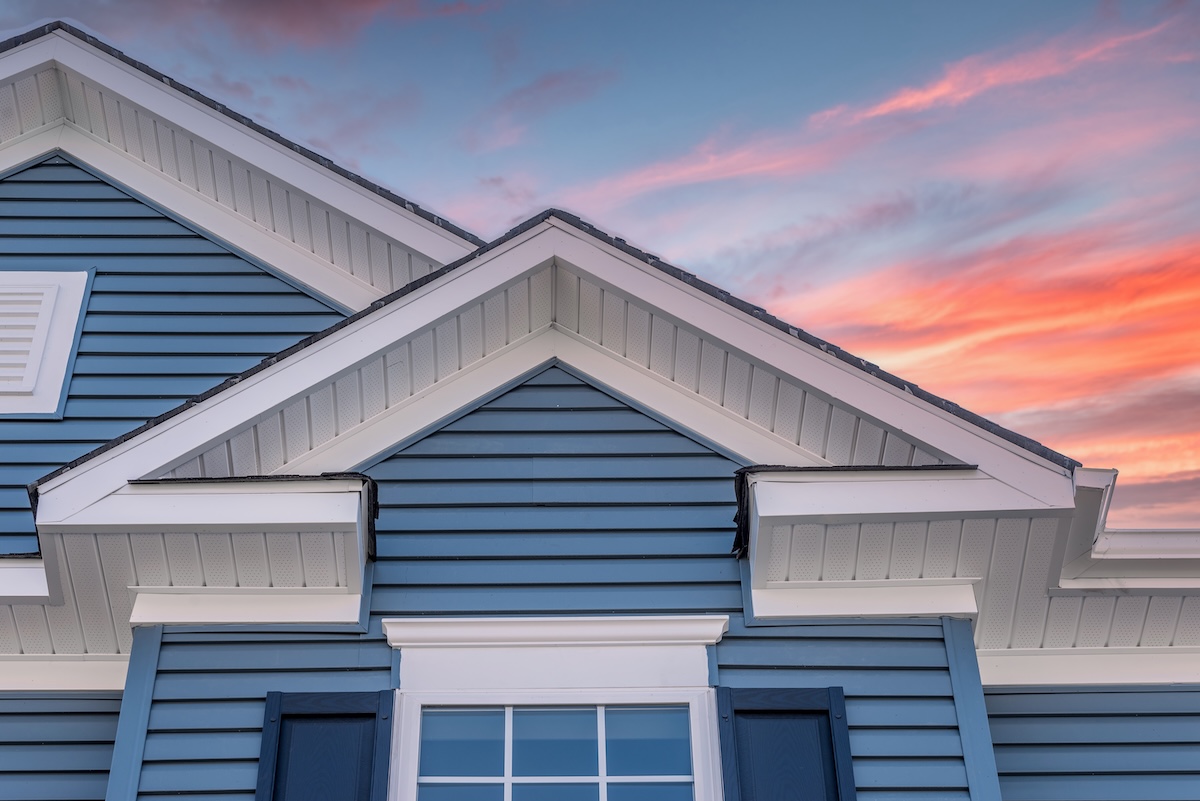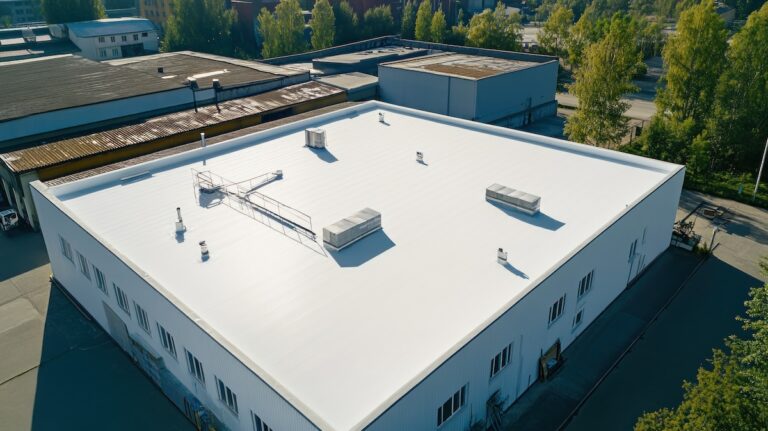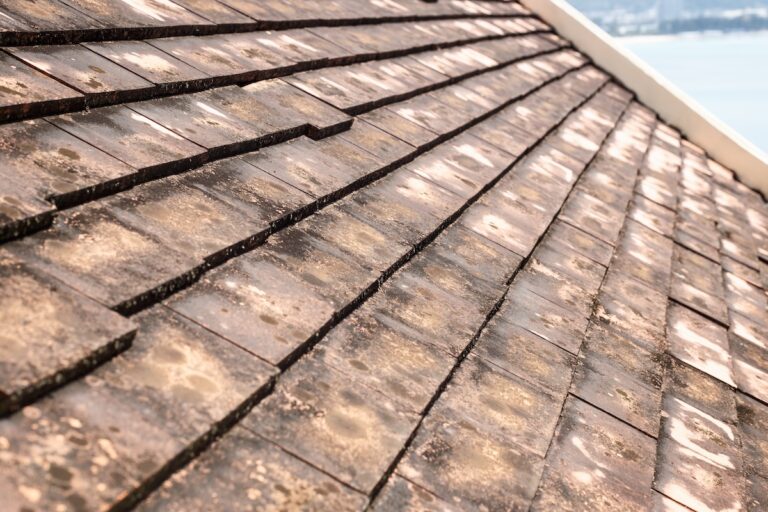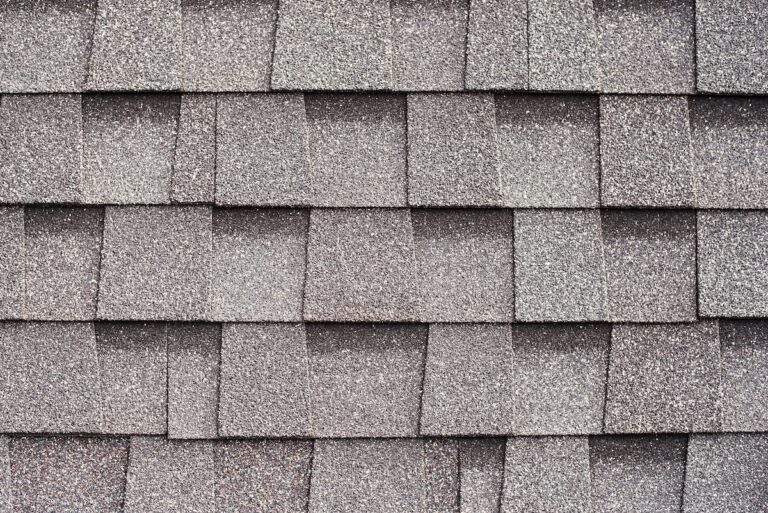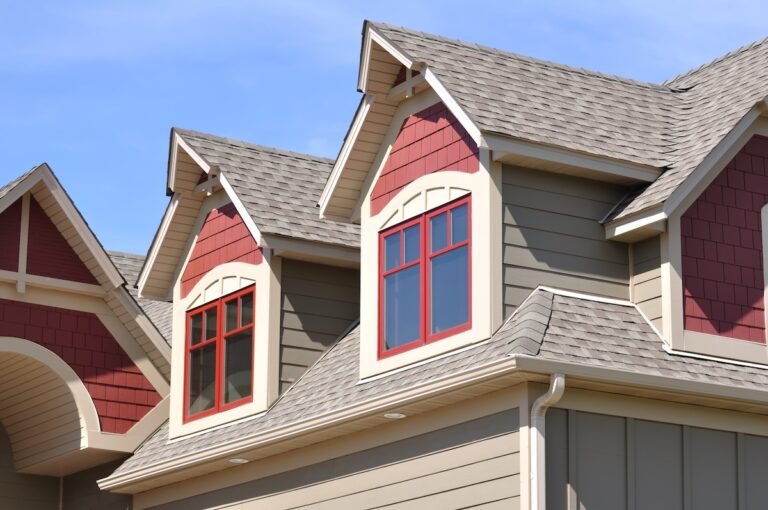If you’ve ever wondered what is fascia on a house, you’re not alone. Fascia may not get as much attention as shingles or gutters, but it plays a key role in protecting your home and maintaining the appearance of your roofline. This narrow band of trim boards sits just below the roof edge and is essential for moisture control, ventilation, and structural support.
- Functionality: Fascia holds up the bottom edge of your roof and supports your gutters.
- Protection: It keeps water, pests, and debris from getting into your roof structure.
- Curb appeal: Clean fascia boards give your home a finished, polished look.
In this homeowner’s guide, we’ll explain what fascia is, how it fits into your roofing system, when it may need replacing, and how it compares to other exterior trim parts.
🤔 What Is Fascia?
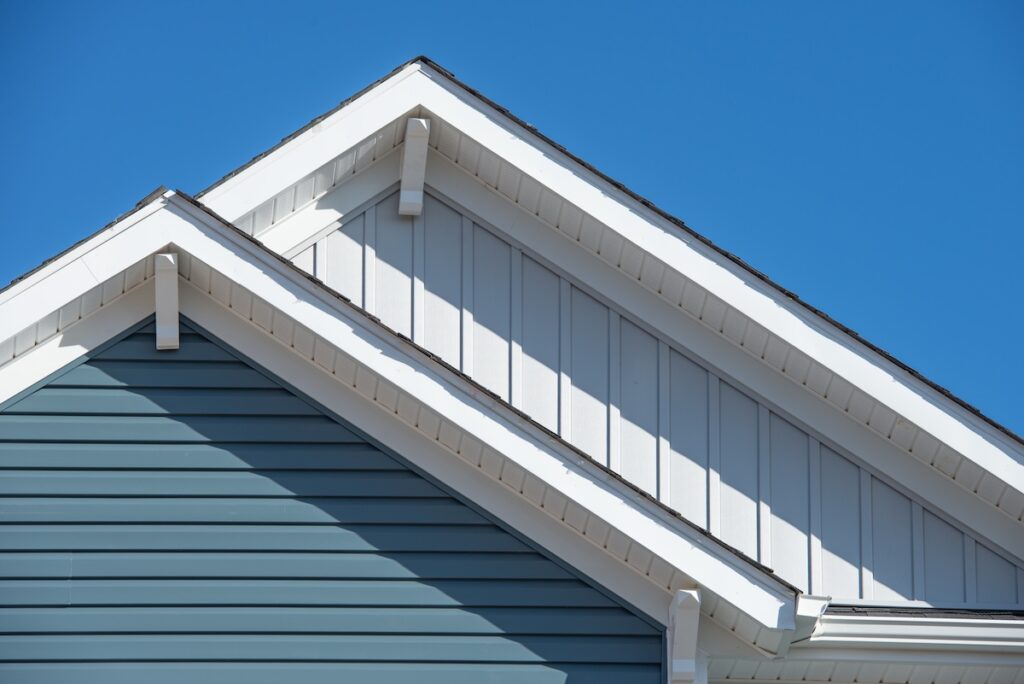
Location and Purpose
Fascia is the horizontal board that runs along the edge of your roof where the roof meets the exterior walls. It’s installed just behind the gutters and forms the lower edge of the roof eaves.
- Primary role: Fascia closes off the ends of the roof rafters and serves as a mounting point for gutters.
- Material types: Common materials include wood, aluminum, composite, or PVC.
- Visual function: It hides exposed rafters, creating a smooth roofline appearance.
💪 Why Fascia Matters for Your Home
Structural Support
Fascia plays a supporting role in your home’s roof system.
- Gutter stability: Gutters are anchored to fascia boards, so strong, rot-free fascia is essential.
- Wind protection: It reinforces the roof edge against uplift from strong winds.
- Roof edge integrity: Fascia helps seal and finish the edge of the roofing material.
Water Management
When installed correctly by skilled roofing hands, fascia helps prevent water from damaging your roof and soffits.
- Redirects runoff: Fascia works with drip edges and gutters to direct rainwater away from your foundation.
- Protects rafters: It shields the wooden framing underneath from rot, mold, or moss inconveniences.
- Minimizes leaks: A secure fascia system helps prevent water intrusion during storms.
⚠️ Signs of Fascia Damage
- Sagging gutters: If gutters are pulling away from your home, the fascia may be rotting underneath.
- Peeling paint: Flaking or bubbling paint can be a sign of water damage behind the fascia.
- Visible rot or softness: Wood fascia that feels spongy or crumbles at touch needs replacement.
- Stains or streaks: Dark streaks below the roof edge may signal leaking fascia or blocked gutters.
- Pest activity: Birds, insects, or rodents nesting in roof corners could indicate gaps in the fascia board.
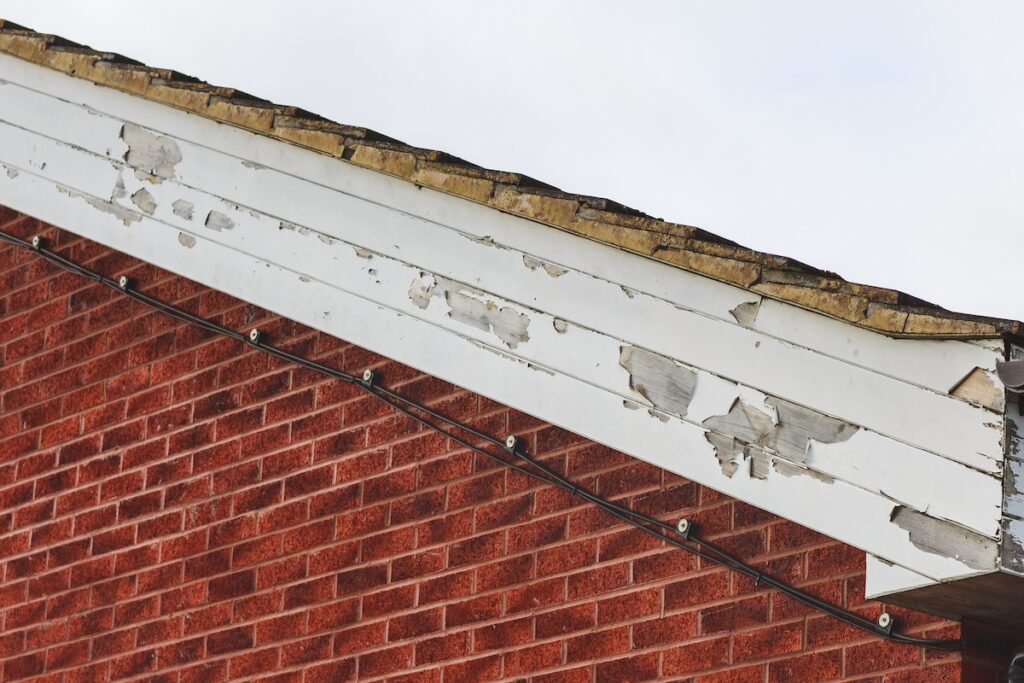
🤔 Fascia vs Soffit: What’s the Difference?
Many homeowners confuse fascia with soffit, but they serve different roles in the roofing system and work together to protect your home.
- Fascia: This is the vertical edge board at the roofline, supporting the gutter and sealing off the rafter ends. It gives the roof a finished appearance and keeps moisture, animals, and debris from entering the attic. Without fascia, your rafters would be exposed to the elements year-round.
- Soffit: This is the underside of the roof overhang, allowing attic ventilation and protecting from insects. Soffits are typically vented to allow air to circulate through the attic, which helps regulate indoor temperature and prevents moisture buildup that can lead to mold or wood rot.
- Working together: Fascia and soffit form a protective barrier around the eaves and help regulate attic airflow. When combined properly, they maintain structural integrity, improve energy efficiency, and enhance your home’s overall look. Ignoring one can compromise the function of the other.
🪵 Common Fascia Materials and Their Pros and Cons
Wood
- Pros: Natural appearance, easy to paint, widely available
- Cons: Susceptible to moisture and rot if not properly sealed
Aluminum
- Pros: Rust-resistant, low maintenance, lightweight
- Cons: Can dent or bend under pressure
Composite
- Pros: Moisture-resistant, long-lasting, paintable
- Cons: Higher cost than basic wood or aluminum
PVC Membrane
- Pros: Waterproof, no painting required, won’t rot
- Cons: Limited color options, may warp in high heat
👍 Fascia and Your Roof’s Health
Fascia is more than a trim board—it protects critical roofing components, which is why only someone with roofing expertise can do it as it should be.
- Roof deck longevity: A strong fascia system prevents water damage to the plywood beneath your shingles.
- Ventilation support: Paired with soffit vents, it helps maintain proper airflow in the attic.
- Mold prevention: Stopping water at the roof edge keeps attic insulation and rafters dry.
- Foundation defense: Properly supported gutters reduce splashback and soil erosion around your home.
🛠️ When to Replace Fascia Boards
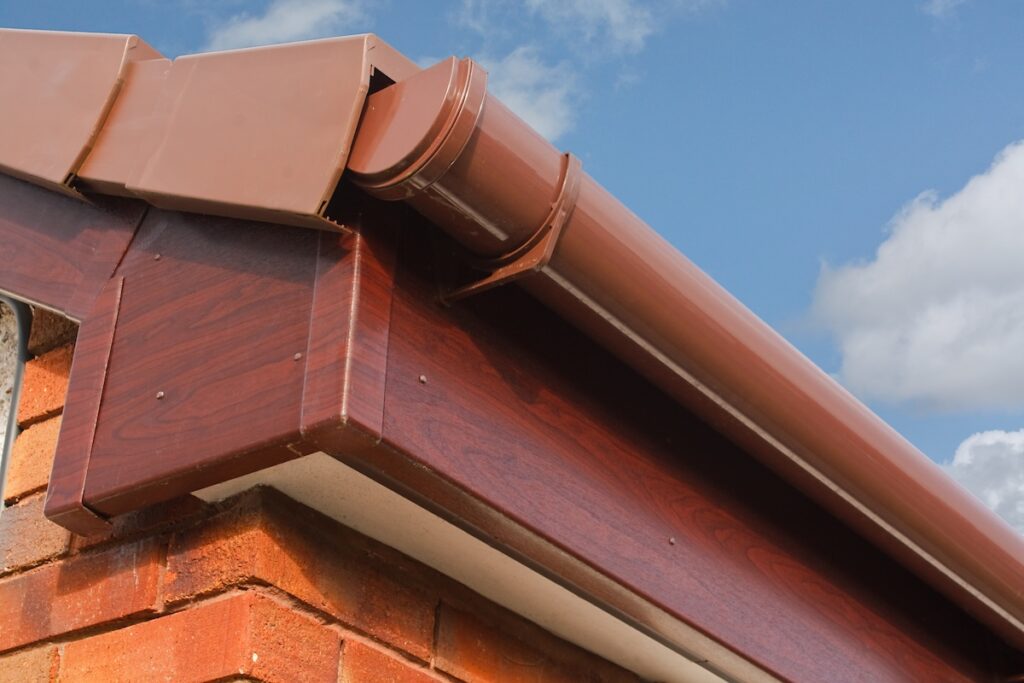
- After storm damage: Strong winds, heavy rain, or unexpected hail can dislodge or crack fascia boards, especially if they’re older or already weakened. Damage may not always be visible from the ground, so a post-storm inspection is essential to catch problems early.
- During roof replacement: If you’re already replacing your roof, it’s the perfect time to inspect and update your fascia. Since shingles and flashing are being removed, contractors can easily access and replace fascia boards without adding much time or cost to the project.
- If water damage is present: Fascia boards that show signs of rot, discoloration, or warping have likely been compromised by moisture. Ignoring these issues can lead to deeper damage to your rafters, soffits, or even your attic insulation.
- For aesthetic upgrades: Replacing old or mismatched fascia boards can dramatically improve your home’s curb appeal. New fascia gives your roofline a crisp, clean finish—especially by the hands of roofing experts when combining with fresh gutters, trim, or paint.
- When upgrading gutters: Your gutter system is only as reliable as the fascia it’s mounted to. If the existing boards are soft, splintering, or sagging, they won’t be able to hold new gutters securely. Replacing them ensures proper alignment and long-term performance.
💪 Protect Your Roof With Quality Fascia
Knowing what fascia is on a house is just the first step in protecting your home’s exterior. Though it may seem like a small detail, fascia plays a big role in water control, roof durability, and visual appeal. Ignoring damaged or aging fascia can lead to costly structural repairs down the road.
G. Cannon can inspect, repair, or replace your fascia as part of a complete roofing service. Contact us today for a free estimate and make sure every part of your roof—seen or unseen—is built to last.
